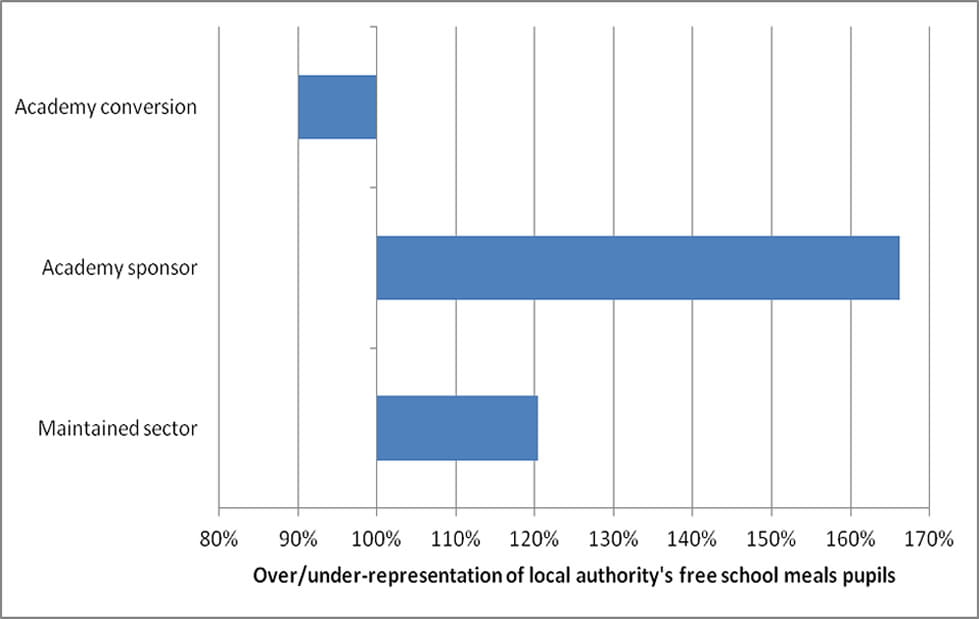Chris Husbands
The inspection report is glowing: “This is an outstanding school… Teaching is outstanding overall… The curriculum is outstanding… Students behave exceptionally well in lessons…” In 2013, 75% of all its pupils attained five GCSEs grades A*-C including English and Mathematics, placing it in the top fifth of all schools nationally. Eight in 10 of its disadvantaged pupils achieved expected progress in English – a result comfortably above national averages. More than this, Sir Michael Wilshaw, Her Majesty’s Chief Inspector visited the school himself and enthused that it was “doing fantastically well. Walking around the school and talking to children, they all appreciate being here. The students are so ambitious for themselves and that is so heartening”.
Just two years later the school is in special measures (PDF): attainment and the quality of teaching are now good, and the quality of leadership and management is now inadequate.
Readers may have guessed: this is Park View Academy in Birmingham, one of the 21 schools at the centre of no less than three separate probes: a co-ordinated OFSTED inspection, a city council investigation, and an investigation by a former head of the anti-terrorist branch. All stem from the charges that a well-organised ‘Trojan Horse’ conspiracy was seeking to transform Park View and other non-faith Birmingham state schools into Islamic schools.
This is a complex saga from which almost no-one involved comes out well. Despite attempts in some of the press to trail the story as a tale of failing inner city schools, inspection reports make it clear that at least several have been good or outstanding.
Despite attempts to link the story to the failings of an urban local authority, several of the schools, including Park View, are already academies: outside the control of the local authority, governed solely by funding agreements with the secretary of state. ‘Academisation’ may be a solution for struggling local authority schools, but it is a difficult policy to promote when schools have already made the switch.
And the complexities get more challenging. For a generation, governments have strenuously advanced the cause of parental influence in education. Under the current government, groups of parents who are dissatisfied with what is on offer from their local authority have had the right to self-organise to propose the establishment of ‘free schools’. But in Birmingham, it appears, some parents have self-organised in a quite different way.
And while schools’ role in community cohesion was dropped from the UK’s inspection framework, across the world schools are encouraged to build strong links and work with the grain of the community. For more than a decade schools have been encouraged to develop their own curriculum specialisms: today’s reports make it clear that in some cases curriculum autonomy has serious shortcomings.
Considerable – and understandable – concern has been raised about segregating boys and girls for assemblies and parts of the curriculum, but it is not too long since the Daily Telegraph and Guardian reported favourably on single gender classes in mixed schools, which, enthused the Telegraph, improved “self esteem… and enthusiasm”. For a century and a half, governments have tolerated or encouraged faith schools in the publicly funded education system. Catholic dioceses, for example, have argued strenuously for the right of Catholic parents and Catholic schools to exercise discretion over the teaching of aspects of science, religious education, sex education or abortion. In Birmingham, it seems, some parents took to extremes their aspirations for a faith ethos and faith practices in their local schools.
The evidence is that Park View Academy still achieves good examination results for many of its pupils despite severe deprivation. The inspected schools have not ceased to succeed for their pupils. But OFSTED also, now, find evidence of something more sinister in the targeting of schools by determined groups and individuals. The saga of the ‘Trojan Horse’ in Birmingham raises profound questions about developments which have become deeply embedded in education policy and practice::
- How should schools balance their commitment to high attainment with a mission to enhance community cohesion?
- Do curricular and pastoral practices matter if attainment is high? Politicians of all stripes have on occasion argued that the only thing that matters is results.
- To whom and how should schools be accountable? There is a powerful trend in much policy debate that schools are fundamentally accountable to parents. How should school leaders respond to insistent demands from well-organised and articulate parent groups wherever they come from?
- We expect schools to co-operate one with another – but should schools be required to co-operate with other schools from different faith traditions? Politicians of all persuasions have trumpeted the benefits of schools making their own decisions.
- In an academised school system, in which schools are autonomous, who should monitor the practices – not simply the performance – of schools?
There are no easy answers to these questions. All the evidence is that managing urban school systems demands exceptional skills locally. Gifted local leadership, as David Woods, Chris Brown and I showed in our study of education transformation in Tower Hamlets, can make a real difference to outcomes, but it demands sophisticated skills and strategic planning.
What Birmingham schools now need is not the media blitz which is accompanying the publication of high profile reports, but something quite different: a determined and long-term focus on linking high performance with community development, commitment to working through local tensions and developing confidence and trust amongst all those involved. They need the heat taken out of the situation. Urban schools, as anyone who has taught in or worked with them know, always face difficult challenges. Addressing those challenges requires resilient and professional support.
Local interim executive boards; partnerships between schools, local and national authorities working to engage community groups; trust and effective leadership all need to be built to develop a consensus on what the schools – publicly funded and secular institutions – need in order to deliver high standards and win parental and community support. Among the last things Birmingham schools need right now are press headlines.

 Close
Close








